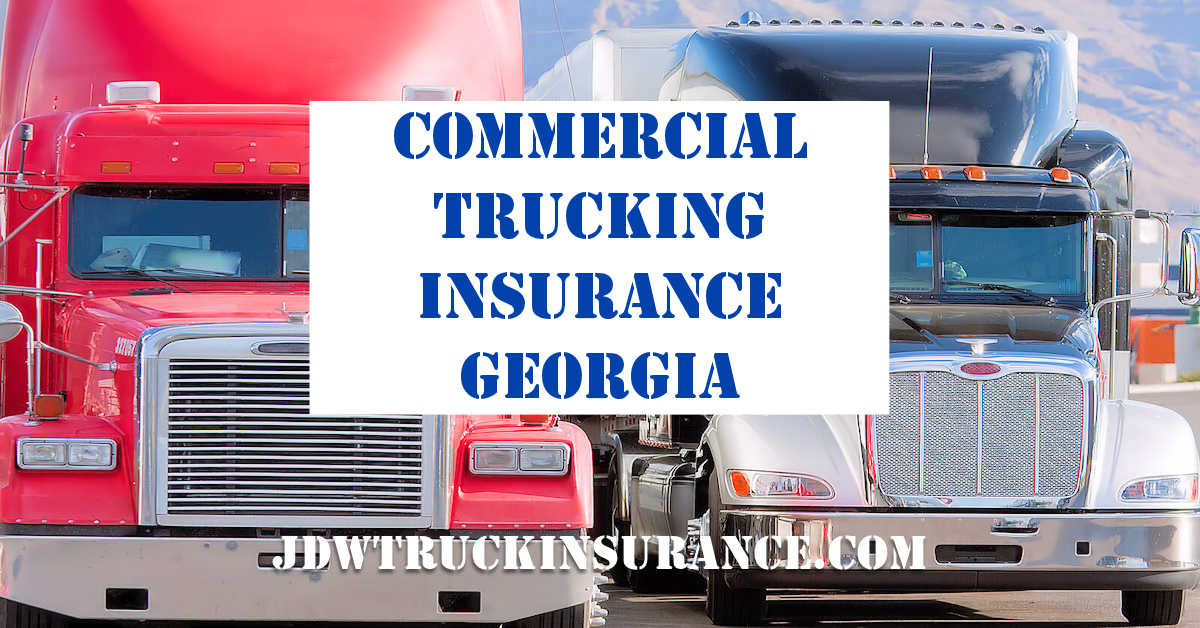Trucking Insurance for New Authority Barrons Lane, Georgia
New Authority Truck Insurance Georgia
Commercial truck insurance Georgia. Trucking Insurance for New Authority Barrons Lane, Georgia. Affordable commercial truck insurance GA. Top rated commercial truck insurance companies Georgia.
Trucking Insurance for New Authority Barrons Lane, Georgia
If you are searching for New Authority Truck Insurance Georgia. JDW Truckers Insurance specializes in New Authority Truck Insurance in Georgia. We help you get affordable commercial insurance rates for your new authority.
We offer quote from only the top rated commercial truck insurance companies who offer the best rates for your new authority in Georgia.
JDW will help get the the correct commercial truck insurance in place which will fit your budget and allow you to haul the cargo you want and need to in order to be successful.
We are here to answer your questions with fast and friendly service.
Trucking Insurance for New Authority Barrons Lane, Georgia
We offer affordable new authority trucking insurance for the entire state of Georgia.
We Customize your New Authority Truck Insurance to Help you Save Money!
Our agents at JDW Truckers Insurance know trucking insurance in Georgia. We will explain the different options and commercial truck insurance requirements in Georgia.
We help you get the right coverages in place so you are no over paying for coverages you may not need. We also help you make sure you have the coverages you need in place. And we do this at affordable commercial truck insurance rates.
New Authority Truck Insurance Requirements and Options
General Liability Insurance for Truckers
- General liability insurance for truckers should not be confused with primary liability for truckers.
- Similar to primary liability. General liability offers coverages to pay for physical damage to other and/or bodily injury to others. BUT there is a difference between the two.
- For example, if you are loading or unloading and you cause injury to someone or their property this is when the general liability policy would respond.
- The actions of a driver while representing the insured and on the premises of others, such as loading docks and truck stops
- General Liability is normally offered $1,000,00 per occurrence and $2,000,00 aggregate. What does this mean?
- It the insurance company will pay up to $1,000,000 for any one claim and no more than $2,000,000 per year for the total of all claims.
- General liability can be required by shippers and other companies such as the UIIA and flatbed operations.
- If there is any chance you might be involved in loading or unloading. General Liability is relatively inexpensive and is an advised coverage.
Auto Liability Insurance
- Your Auto Liability or primary liability will be the major cost for your trucking insurance policy. Although the FMCAS can only require $750,000 in most cases shippers will require $1,000,000 in primary liability insurance coverage before they will allow you to pick up loads.
- Primary liability insurance covers damages to third parties for bodily injury and physical damage to others property in the event of an accident.
Medical Pay
- In most cases this is a low cost add on to your primary liability insurance to cover medical expenses.
PIP – Personal Injury Protection
- Some states require this coverage and, in many cases, can reduce the need for Medical Pay.
- Personal injury protection (PIP), also known as no-fault insurance, covers medical expenses and lost wages of you and your passengers if you’re injured in an accident. PIP coverage protects you regardless of who is at fault.
Uninsured Motorist
- If you’re hit by a driver with no insurance…
- Uninsured motorist bodily injury (UMBI) may pay medical bills for both you and your passengers.
- Uninsured motorist property damage (UMPD) may pay for damage to your vehicle.
Underinsured Motorist
- If you’re hit by a driver with not enough insurance…
- Underinsured motorist bodily injury (UIMBI) may pay medical bills for both you and your passengers
- Underinsured motorist property damage (UIMPD) may pay for damage to your vehicle
Motor Truck Cargo
- MTC or Cargo insurance provides insurance on the freight or commodity hauled by a for-hire trucker. It covers your liability for cargo that is lost or damaged due to causes like fire, collision or striking of a load.
- If your load is accidentally dumped on a roadway or waterway, some cargo forms offer Removal Expenses coverage pays for removing debris or extracting pollutants caused by the debris. And can also pay for costs related to preventing further loss to damaged cargo through Sue and Labor Coverage and legal expenses in the defense or settlement of claims. Another option is Earned Freight Coverage to cover freight charges the customer loses because of an undelivered load.
- Cargo insurance deductibles can be set at $1,000, $2,500, $5,00 or even higher if you are self-insured.
- Cargo coverage limits are normally set at $100,00 but some shippers may have higher requirements depending on the cargo you are hauling.
- Cargo policies can have exclusions stating what cargo it will or will not cover.
Trucking Physical Damage Insurance (PD)
- Physical damage insurance coverages are designed to pay for losses to your equipment and damages to others equipment. (Others equipment must be listed on your policy).
- If you own or lease equipment. You may be required to have PD by bank or leasing company to carry a set amount of physical damage insurance and name them as a Loss Payee.
- PD can also cover damage to others equipment you are in possession of if the coverage is listed on your policy. An example would be non-owned trailer insurance coverage.
- Deductibles for physical damage range from $1,000 to $5,000.
- Required deductibles. If you have a loan on your equipment or it is leased. They bank or leasing company may have a minimum deductible you can have on your physical damage policy.
Trucking Insurance for New Authority Barrons Lane, Georgia
Chat with JDW Truckers Insurance. We are fast and friendly. Great customer service. Free 24/7 COI.
We offer affordable new authority truck insurance in:
AL – AR – FL – GA – IN – MO – MS – NC – OH – PA – SC – TN – TX – VA
We offer new authority truck insurance quotes for:
- Dry van
- Flatbed
- UIIA
- Amazon
- Reefer and more
Trucking Insurance for New Authority Barrons Lane, Georgia
Trucking Insurance for New Authority Barrons Lane, Georgia
Macon County is a county located in the west central portion of the U.S. state of Georgia. As of the 2020 census, the population was 12,082. The county seat is Oglethorpe.
The Macon County Courthouse is located in Oglethorpe.
Macon County was created in 1837 from parts of Houston (“house-ton”) and Marion counties, effective December 14 of that year. The 91st county, it was named for the then-recently deceased General Nathaniel Macon of North Carolina, who served in the U.S. Congress for 37 years and ran for U.S. vice president. The city of Macon, Georgia was also named for him, but the city of Macon, Georgia, is the seat of Bibb County, a different county. The county was later reduced when parts were separated to organize Taylor and Peach counties, in 1852 and 1924, respectively.
The first county seat was not chosen until 1838, when the county’s inferior court selected Lanier. The Georgia General Assembly (state legislature) designated it on December 29 of that year and incorporated it as a town.
In the 1850s, the Central of Georgia Railroad was built through Oglethorpe, changing county dynamics. As a result, the Georgia Assembly called for a referendum on moving the Macon County seat to Oglethorpe in February of both 1854 and 1856. Little is known about the first vote, but the second vote resulted in approval for a change to the county seat, and Oglethorpe was designated the following year in 1857.
During the Civil War, 13,000 Union soldiers who were prisoners of war died at the Confederate camp in Andersonville, Georgia from starvation and disease. In the late period of the war, Georgia also had difficulty supplying its own troops and people with food. Throughout the Civil War, more men on both sides died of disease than of their wounds. Commandants of the camp were prosecuted after the war for poor treatment of prisoners. The Andersonville National Cemetery, established for the many Union dead, is at the southwestern tip of the county.
The county has an active Mennonite community. The area code for Macon County is currently 478.
According to the U.S. Census Bureau, the county has a total area of 406 square miles (1,050 km), of which 401 square miles (1,040 km2) is land and 5.4 square miles (14 km) (1.3%) is water. The county is located in the upper Atlantic coastal plain region of the state.
Most of the southern half of Macon County, from west of Ideal to State Route 49 north of Montezuma, then running north along State Route 49 to Marshallville, and then running southeast in the direction of Unadilla, is located in the Middle Flint River sub-basin of the ACF River Basin (Apalachicola-Chattahoochee-Flint River Basin). The northern and northwestern portion of the county, from north of Marshallville heading west, is located in the Upper Flint River sub-basin of the same ACF River Basin. The northeastern corner of Macon County, east of Marshallville, is located in the Lower Ocmulgee River sub-basin of the Altamaha River basin.
As of the 2020 United States census, there were 12,082 people, 4,696 households, and 3,033 families residing in the county.
As of the 2010 United States Census, there were 14,740 people, 4,999 households, and 3,363 families living in the county. The population density was 36.8 inhabitants per square mile (14.2/km2). There were 6,136 housing units at an average density of 15.3 units per square mile (5.9 units/km). The racial makeup of the county was 60.6% black or African American, 35.1% white, 1.3% Asian, 0.3% American Indian, 0.1% Pacific islander, 1.6% from other races, and 1.0% from two or more races. Those of Hispanic or Latino origin made up 3.6% of the population. In terms of ancestry, and 7.1% were American.
Of the 4,999 households, 33.0% had children under the age of 18 living with them, 37.5% were married couples living together, 24.0% had a female householder with no husband present, 32.7% were non-families, and 29.2% of all households were made up of individuals. The average household size was 2.56 and the average family size was 3.15. The median age was 38.2 years.
The median income for a household in the county was $27,950 and the median income for a family was $37,218. Males had a median income of $27,274 versus $23,750 for females. The per capita income for the county was $12,902. About 24.1% of families and 33.0% of the population were below the poverty line, including 44.8% of those under age 18 and 27.2% of those age 65 or over.
As of the 2000 census of 2000, there were 14,074 people, 4,834 households, and 3,485 families living in the county. The population density was 35 people per square mile (14 people/km2). There were 5,495 housing units at an average density of 14 units per square mile (5.4 units/km). The racial makeup of the county was 59.48% Black or African American, 37.37% White or Caucasian, 0.22% Native American, 0.60% Asian, 0.05% Pacific Islander, 1.52% from other races, and 0.75% from two or more races. 2.59% of the population were Hispanic or Latino of any race.
There were 4,834 households, out of which 34.50% had children under the age of 18 living with them, 42.70% were married couples living together, 24.40% had a female householder with no husband present, and 27.90% were non-families. 25.20% of all households were made up of individuals, and 10.40% had someone living alone who was 65 years of age or older. The average household size was 2.71 and the average family size was 3.25.
In the county, the population was spread out, with 27.60% under the age of 18, 9.70% from 18 to 24, 27.60% from 25 to 44, 22.30% from 45 to 64, and 12.70% who were 65 years of age or older. The median age was 35 years. For every 100 females there were 98.50 males. For every 100 females age 18 and over, there were 96.70 males.
The median income for a household in the county was $24,224, and the median income for a family was $29,402. Males had a median income of $26,922 versus $18,611 for females. The per capita income for the county was $11,820. About 22.10% of families and 25.80% of the population were below the poverty line, including 39.00% of those under age 18 and 22.60% of those age 65 or over.
Macon County has been an important setting for season 4 of AMC’s hit TV show, The Walking Dead.
Macon County was a shooting place for the 2013 movie, The Hunger Games: Catching Fire.
32°21′N 84°02′W / 32.35°N 84.04°W
Choose the Right Agent
When choosing the agent, you want to represent you to the insurance companies. Pick an agent that is trained in commercial truck insurance. And make sure the agent you choose to work with is there when you need them. Our agents are trained in commercial truck insurance and are easy to contact. Email, phone call or text message. We respond quickly to our clients.
Certificate of Insurance
Not being able to get a quick COI could cost you money by not being able to pick up a load for the lack of a COI. Our clients at JDW Truckers Insurance are given access to our COI Portal where they can issue a COI 24/7 free of charge.
Insurance Companies Customer Service
Not only should you choose a responsive agent but you will want to be insured by a commercial insurance company who also responds to your requests and are there to help you in case of a claim or endorsements
AM Best Ratings
The AM Best Rating of the commercial truck insurance company you choose to insure your operation should not be over looked. You want to be insured by a trucking insurance company that has the financial stability to pay claims. Many shippers will require an AM Best Rating of A – minus of better. At JDW all of network of commercial truck insurance companies have an AM Best Rating of A – or better.



